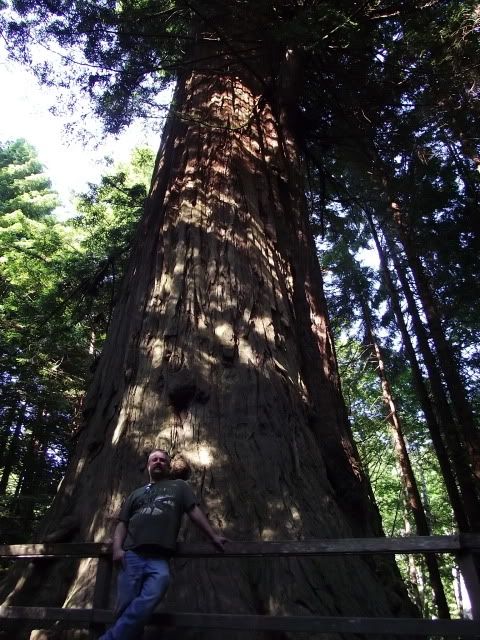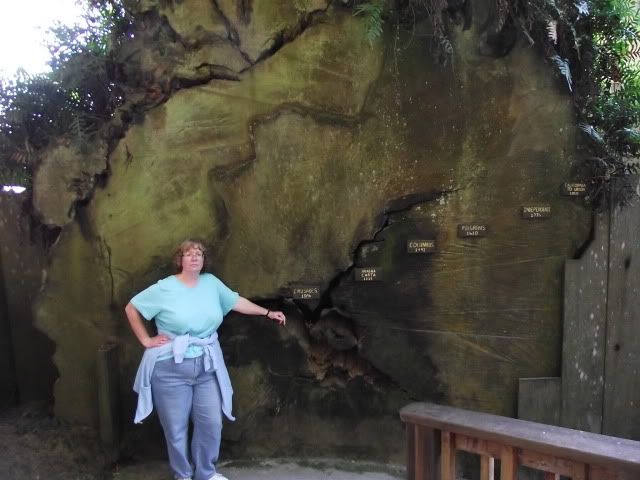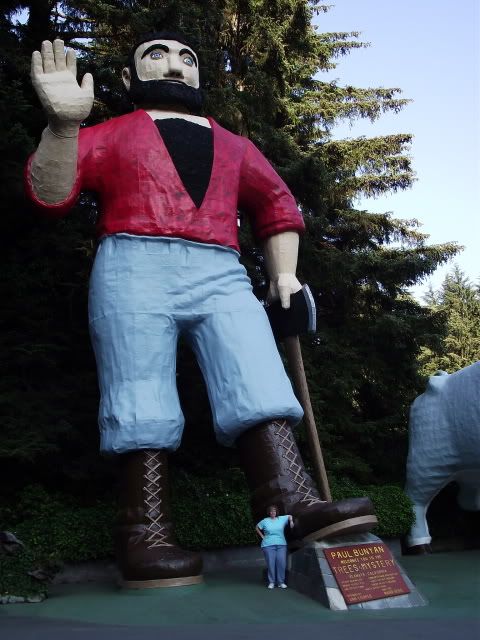|
|
Post by amcdude on Jul 14, 2012 9:27:48 GMT -8
Was on vacation down in Kalli last week, on the way home we swung over to the coast to see the BIG! Redwood's, for even those of us up here in the Pacific North West where big trees are something we take for granted these are the biggest of them! They didn't have any statistics on this one?, but it must have been about 15'+ across at the base?, and approaching 400' tall!  This shows how old some of them are!, many this old are still alive and well.  And the photo op with Mr. Bunyan himself.   |
|
|
|
Post by Muleskinner on Jul 14, 2012 11:02:08 GMT -8
Some great pictures of the area where I used to live and work. That Paul Bunyan and Babe are still my favorites in the Klamath Glen area. I always drive the Avenue of the Giants when ever I go down to Eureka, California to see the kid. Lots of memories there in Northern Humboldt and Del Norte counties. Thanks for sharing.
|
|
|
|
Post by ap40rocktruck on Jul 14, 2012 15:03:01 GMT -8
amazing, still need to make it out to that part of Cali to see it all in person.
Thank you for sharing the shear scale of that wood.
Ap40
|
|
|
|
Post by gator on Jul 14, 2012 16:00:15 GMT -8
Cool pics! Thanks for sharing them with us.
be Well
Gator
|
|
|
|
Post by Ryan Rønning on Jul 14, 2012 18:31:32 GMT -8
From the title of the post I thought you were talking about the movie. LOL
|
|
|
|
Post by tufftin on Jul 15, 2012 8:01:25 GMT -8
The bark on these is very much a fire resistant thing. Probably accounts for the longivity of the forest in that area.
My in-laws in Washington had 2 Sequoia trees along the walkway out of their back door. They were planted in the '20's and have grown rather large now but............... we use to show folks how much they resisted fire by trying to light the bark. It would never light but I'm sure if the fire was hot enough and long enough it would burn but probably a natural thing that has protected them all these many years in the Redwood Forests of California.
Many folks have tried to start seeds off of these 2 trees and never get them to grow. Must be the same sex trees.
Mike
|
|
|
|
Post by Muleskinner on Jul 15, 2012 10:23:13 GMT -8
You're right there Mike, the California redwood has a cycle which it goes through, like a sex change over the years from male to female and back to male. They will not germinate if the tree in in the same sex stage. That's why now days they start them in a nursery and then replant them. Their development in the wild is just so unpredictable by their nature. That's why in many areas of Northern California the logged over areas from the early years have never regrown by natural means. The Redwoods National Park Service is now undergoing a project of going in and artificially re planting those areas once more.
As for the bark of the Redwood, a lot of the older houses built at the turn of the century, in Humboldt County and other places, used it for insulation between the walls, because of its resistance to fire. In the logging areas, they left it lay where it was peeled off the logs and it formed a fire retardant flooring in the area and also became a matting for other plants to take hole and grow, including other Redwoods and different kinds of tree as it held back the moisture from evaporating back into the atmosphere.
Something a lot of people don't realize also is a redwood tree is the only living tree which waters through the top and the roots. When they are in a drought, they get their water from the coastal fog which rolls in across the top of the groves in the evenings and morning. When its in a normal raining period, they water from the roots and the tops. The Massive Sequoia's In the Sierra Nevada range also are like the coastal ones. Where as they water from top to bottom. Bottom to top or both. This system both supports their growth rate and longevity of life.
The Redwood trees made their first appearance back in the Cretaceous Period when Dinos walked the earth under the name of the Dawn Redwood. All the Redwoods on the West Coast and Sierras Nevada's are off Shoots of the the early Dawn Redwood, as is the modern day Cedar tree.
|
|